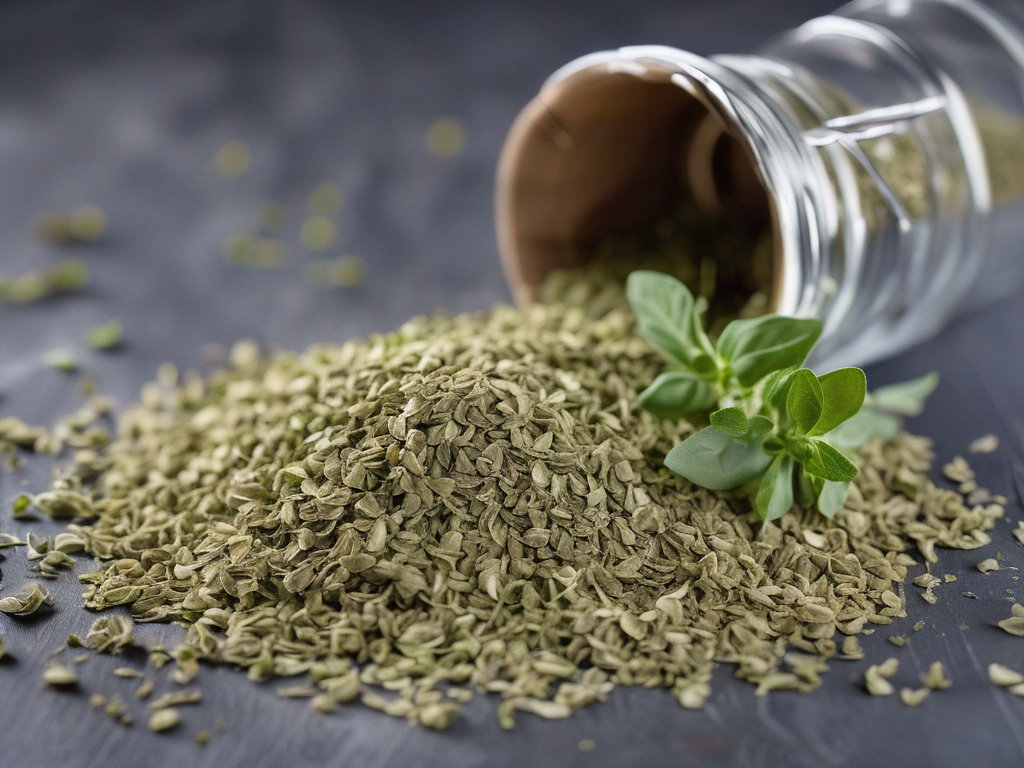
The Best Way to Preserve Dried Oregano for Future Use
Get Your Free Food Safety Cheat Sheet
30 most common foods with instant answers. Print it and stick it on your fridge—completely free!
The Best Way to Preserve Dried Oregano for Future Use
Dried oregano is a versatile herb that adds flavor and aroma to a variety of dishes, from pasta sauces to grilled meats. Properly storing dried oregano is essential to maintain its freshness and potency for future use. In this blog post, we will discuss the best ways to preserve dried oregano so you can enjoy its savory taste for months to come. (Dried oregano)
Why is Proper Storage Important for Dried Oregano?
Dried oregano, like other herbs, can lose its flavor and aroma if not stored correctly. Factors such as exposure to light, air, and moisture can degrade the quality of dried oregano over time. By following proper storage guidelines, you can ensure that your dried oregano retains its flavor and potency.
Tips for Preserving Dried Oregano
Here are some practical tips for preserving dried oregano for future use:
-
Store in an Airtight Container: Transfer dried oregano to an airtight container to protect it from air and moisture. Glass jars or containers with tight-sealing lids are ideal for storing dried herbs.
-
Keep in a Cool, Dark Place: Store the container of dried oregano in a cool, dark place away from direct sunlight. Heat and light can cause the herbs to lose their flavor and aroma quickly.
-
Label and Date the Container: To keep track of the freshness of your dried oregano, label the container with the date of storage. This will help you use the oldest herbs first to ensure maximum flavor.
-
Avoid Storing Near Heat Sources: Keep the container of dried oregano away from heat sources such as stoves, ovens, or microwaves. Heat can cause the herbs to lose their potency and flavor.
-
Do Not Refrigerate: While refrigeration may seem like a good idea to extend the shelf life of dried herbs, the moisture in the refrigerator can actually degrade the quality of dried oregano. It is best to store dried herbs in a cool, dry pantry.
Safety Precautions for Storing Dried Oregano
When it comes to storing dried oregano, it is essential to follow some safety precautions to prevent contamination and ensure food safety:
- Wash hands thoroughly before handling dried oregano to prevent the transfer of bacteria.
- Check the dried oregano for any signs of mold or discoloration before storing it.
- Avoid using damp or wet spoons when scooping dried oregano to prevent moisture buildup in the container.
How Long Can Dried Oregano Be Stored?
When stored properly in a cool, dark place, dried oregano can retain its flavor and aroma for up to one year. However, the potency of the herb may decrease over time, so it is best to use it within six months for optimal flavor.
Ways to Check the Quality of Dried Oregano
To ensure that your dried oregano is still fresh and flavorful, you can perform the following checks:
-
Appearance: Dried oregano should retain its vibrant green color. If it appears dull or discolored, it may have lost its potency.
-
Aroma: Crush a small amount of dried oregano between your fingers and smell it. Fresh oregano should have a strong, aromatic scent.
-
Taste: Sprinkle a pinch of dried oregano on your palm and taste it. The herb should have a robust and flavorful taste.
Conclusion
Properly storing dried oregano is crucial to preserving its flavor and aroma for future culinary creations. By following the tips mentioned in this blog post, you can ensure that your dried oregano remains fresh and potent for an extended period. Remember to store it in an airtight container in a cool, dark place, and check its quality before use. Enjoy cooking with flavorful dried oregano in your favorite dishes!
For more information on dried oregano and other food-related topics, visit [dried oregano](/food/dried oregano) for insightful articles and resources. (Dried oregano)
Authoritative Food Safety References
These agencies and university labs inform every tip and health precaution we publish.
USDA FoodKeeper – Cold Storage Guidelines
Official refrigerator, freezer, and pantry timelines maintained by the U.S. Department of Agriculture.
Visit USDA FoodKeeperFDA Produce Safety Rule & Grower Guidance
Field-to-fridge handling practices that prevent contamination of fruits, vegetables, and leafy greens.
Visit FDA Produce SafetyCDC Foodborne Illness Prevention Hub
Surveillance-backed guidance on pathogens, symptoms, and steps to reduce foodborne illness risk.
Visit CDC Food SafetyUC Davis Postharvest Technology Center
University research detailing optimal storage atmospheres for produce after harvest.
Visit UC Davis PostharvestPenn State Extension – Home Food Preservation & Safety
Peer-reviewed extension bulletins on safe canning, chilling, and reheating practices.
Visit Penn State ExtensionGet Your Free Food Safety Cheat Sheet
30 most common foods with instant answers. Print it and stick it on your fridge—completely free! Want more? Upgrade to the complete guide with 70+ foods.
Scan your food directly and get instant safety info using our AI-powered camera feature.